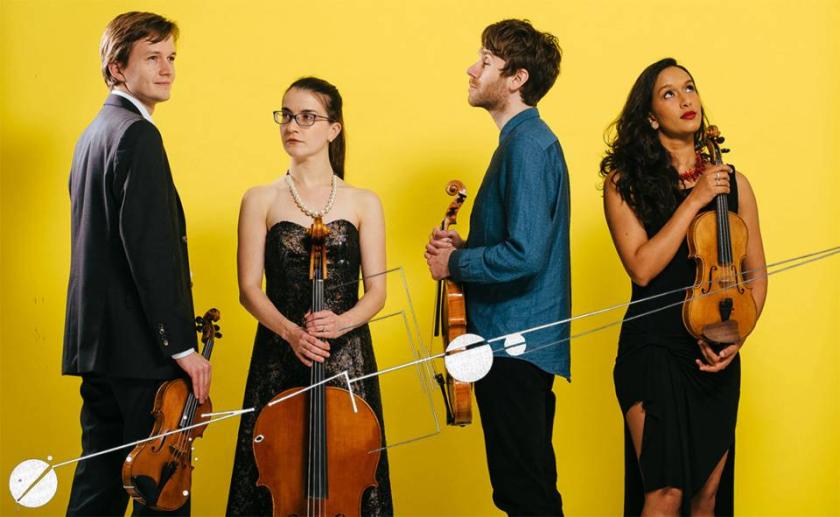Treatise by Cornelius Cardew is the defining work of the graphic notation movement. The score, completed in 1967, is made up of 193 landscape pages, each with two empty musical staves running along the bottom, with an array of graphic designs above, often incorporating elements of musical notation, but rarely specifying pitches or rhythms.
Throughout the summer term at Goldsmiths, a series of concerts have presented different interpretations of an 11-page excerpt from Treatise (pp. 115-126), and this, the conclusion of the Treatise Project, brought six readings together. The Project, masterminded by David Cline and James Creed, involved students from every year in the Music Department, playing a wide range of instruments. The result was a series of diverse performances, mostly by ad hoc student groups, that highlighted the interpretive potential of the score, or the "regenerative capacity" of the notation, as Creed put it. The performances also demonstrated the work’s many paradoxes, particularly the surprising detail of its non-prescriptive language, and the sheer aesthetic elegance of the pages, sometimes at odds with the sounds they inspire, but just as often inviting similar contemplative moods.
This was a laid back jazz-infused reading, a kind of lounge version of 'Treatise'Outline Ensemble opened the programme, a group of eight players dominated by synthesizer and vibraphone. Another recurring element of the score’s visual vocabulary is a broad horizontal line, often broken and occasionally tilting. Many of the ensembles represented this through drones, long, held notes beneath the action in the other parts. For Outline Ensemble, that meant violins and bassoon. The excerpt has an elegant ending, with the physical texture of the notation dissipating over the final page. Here, that effect was created by moving from pitched sounds to unpitched, the players tapping and knocking against the bodies of their instruments. Lewis Wolstanholme played synth in the first performance, but then gave the second version solo, this time on a microtonal patch. This reading was freer still, a kind of spontaneous reaction to the broad outlines of Cardew’s designs – but why not? Many of Cardew’s pages feature gradually converging lines, which Wolstanholme rendered as increasingly intense dissonances between the adjacent pitches of his keyboard, each a fraction of a semitone apart.
The first half ended with a performance by the Ligeti Quartet, currently Ensemble-in-Residence at Goldsmiths. They gave a deliberately literal reading, or rather a very precise one. Every symbol of the score was acknowledged in their performance, sometimes to the point of comical pedantry, as when a large circle appears on the score and the second violinist accordingly bows his instrument in a circular motion across the strings. The performance demonstrated that Cardew’s score can be more than simply an impetus to interpretation, and the sheer quantity of fully realised music in the notation itself, even if all the pitches and rhythms here had been carefully chosen by the players.
Nine Trio opened the second half, the three instruments violin, electric guitar and piano. This was a laid back jazz-infused reading, a kind of lounge version of Treatise. But careful ensemble was maintained between the instruments, with the guitar and piano always playing off each other and carefully synchronised, over that black-line drone on the violin.
The final two performances brought the score itself into the foreground. Up until now, one page of the score had been projected behind the players. For Evie Hilyer-Ziegler’s viola performance (accompanied by an unnamed cellist), a system was employed to make her sounds trigger rhythmic distortions in the projection. The final performance, by Circle Percussion, was given with the projected pages scrolling in real time. In fact, this was another very free reading, but rich in varied tone colours, from a cello with a banjo-like membrane table, electric guitar played Hawaiian-style on the floor with a bank of effects, drum kit and creatively employed tam-tam. The sonic ambiguity of the ensemble made their sounds seem like accompaniment, and the score itself became the centre of attention, its potent symbols so rich in musical potential, but just as impressive and inspiring on their own, visual terms.














Add comment